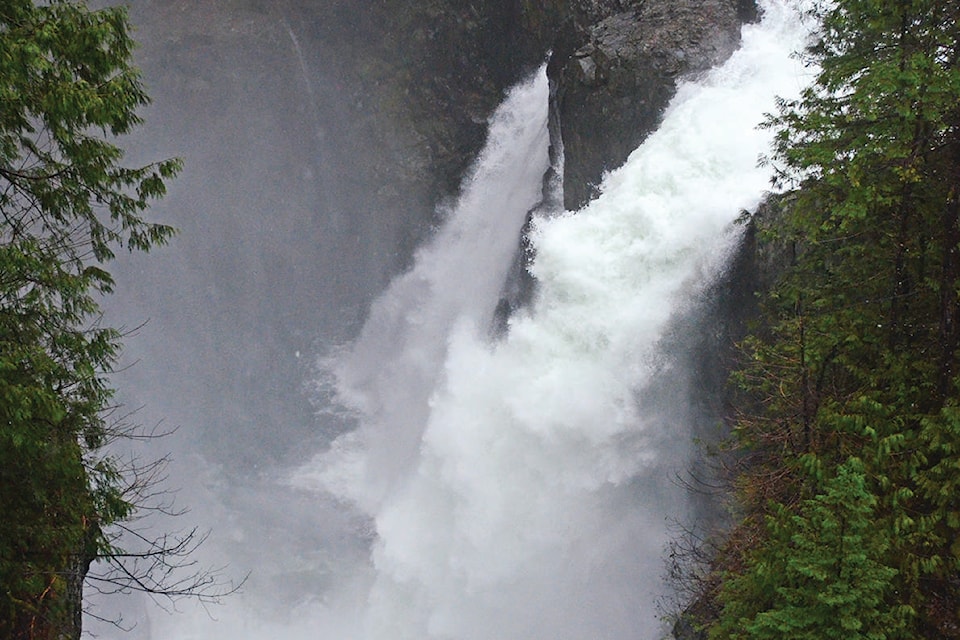BC Hydro will increase water flows within Elk Falls Canyon to assist steelhead migrating and spawning below Elk Falls beginning March 2.
BC Hydro is commencing five, two-day in duration, steelhead migration and spawning flows down Elk Falls Canyon, Stephen Watson, BC Hydro stakeholde rengagement advisor, said. This is to enable fish to access good habitat from the powerhouse tunnel outlet area up to the base of Elk Falls. The water releases from the John Hart Dam, which will increase from four cubic metres per second (m3/s) to 10 m3/s, will take place March 2 to 4, and then each Tuesday evening to Thursday evening to April 1.
Out of consideration for public safety, BC Hydro begins to increase the water discharges for each of the migration flows from the dam at night.
A public safety advisory is in place for the river from John Hart Dam to Elk Falls during the migration flows. The public is asked to stay away from the river at this location when these migration flows are in place. Temporary safety signage will be posted.
Story continues below…
We’re lowering the #CampbellRiver water flow on Monday, though still good flows for salmon fry as they begin to out-migrate to the ocean over the next few months. 🐟 pic.twitter.com/iWAdKI7qOf
— Stephen Watson, BC Hydro (@SWatson_BCH) February 25, 2021
Water levels and water supply forecast
Meanwhile, the water levels in the upper watershed have been slowly dropping since the January rain events, similar to what happened last year.
Like the last few Februarys, this month has been drier with precipitation being around 60 per cent of normal. The largest of the three reservoirs, Upper Campbell Reservoir/Buttle Lake, is currently at 216.2 metres, which is within the preferred zone but a bit lower than normal for this time of year. The preferred reservoir level range adjusts lower into the spring and at the lower end is 213.5 metres.
With the current dry weather forecast, the reservoir level will continue to slowly drop in the short term. This is the same situation for the Lower Campbell Reservoir/McIvor Lake, which is currently at 177.3 metres, and has a smaller preferred seasonal range from 176 metres to 177.8 metres through to June 21.
The John Hart generating station has been running at about 100 m3/s for some time, though with the drier weather, early next week B Hydro plans to lower the Campbell River flows to about 80 m3/s and keep it at that rate until there’s a significant change in the weather. The 80 m3/s flow rate keeps fish habitat within the river covered, and will be good for the salmon fry as they begin their out-migration to the ocean. Water inflows into the Campbell River system over the next week are forecast to be around 50 m3/s.
For the broader water supply forecast, the Vancouver Island snowpack is near normal for this time year. The snowpack typically peaks around the end of April. BC Hydro expects inflows to increase around that time with the snowmelt.
“Our February to September water supply forecast is updated each month, and it guides our Campbell River operations and water management for various water use interests such fish habitat, recreation and power generation,” Watson said. “The first water supply forecast for the February to September period is showing 104 per cent of normal. However, it is still early and much can change over the next few months should the dry weather continue or should it turn wet.”
RELATED: John Hart Dam project will move massive amounts of earthfill
